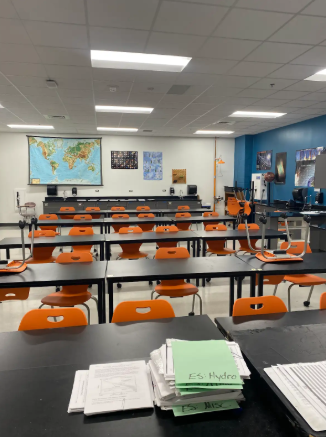Balloons shot down across the country
Graphic design created by Aynsleigh Penland using Canva’s Presentation software
After initially entering contiguous United States airspace four days earlier, a suspected Chinese spy balloon was shot down off the coast of South Carolina on Feb. 4. Over the course of the next eight days, four more flying objects were shot down.
The first balloon, which China has officially claimed as its own, had been tracked by the U.S. since its departure from Hainan Island around a week prior to its entering Alaskan airspace on Jan. 28.
The Chinese have claimed the balloon was only meant to serve as a weather observation device, but U.S. officials have concluded from debris, as well as its trajectory, that it was intended for surveillance of military installations. Additionally, according to two senior officials, it is believed that the balloon had the capability to self-destruct.
It should also be noted that it has recently come to light that Chinese spy balloons are not a new happening, but instead, our technology for spotting them has just gotten better. In reality, spy balloons have been spotted over at least five continents as part of China’s ever-expanding surveillance program.
The other three balloons were shot down one day after another between Feb. 10 and Feb. 12, over Alaska, the Yukon, and Lake Huron, Michigan, respectively.
Nothing surrounding the three balloons has been officially confirmed. The possibility of the Lake Michigan balloon being a missing hobby balloon last seen in the area around the time of the incident has been raised.
In the wake of the balloons being downed, many began to criticize the seeming lack of response from the White House on the matter, as well as questioning if the balloons posed enough of a security threat to warrant the response.
Some voices, including that of China itself concerning the first object, have argued that the response of downing the balloons has been an overreaction and only serves to increase tensions.
Those in favor of downing the balloons have argued that the potential threat of spying on military installations is too great to overlook and/or that China’s assumed disregard for various airspaces, not just including the U.S., is a disregard of sovereignty that cannot stand.
As the blatant and seemingly aggressive nature of Chinese surveillance is made clear around the world, and tensions only seem to increase, the prospects of global strife with the country become closer and harder to ignore.
Your donation will support the student journalists of Fuquay-Varina High School. Your contribution will allow us to purchase equipment and cover our annual website hosting costs.











































